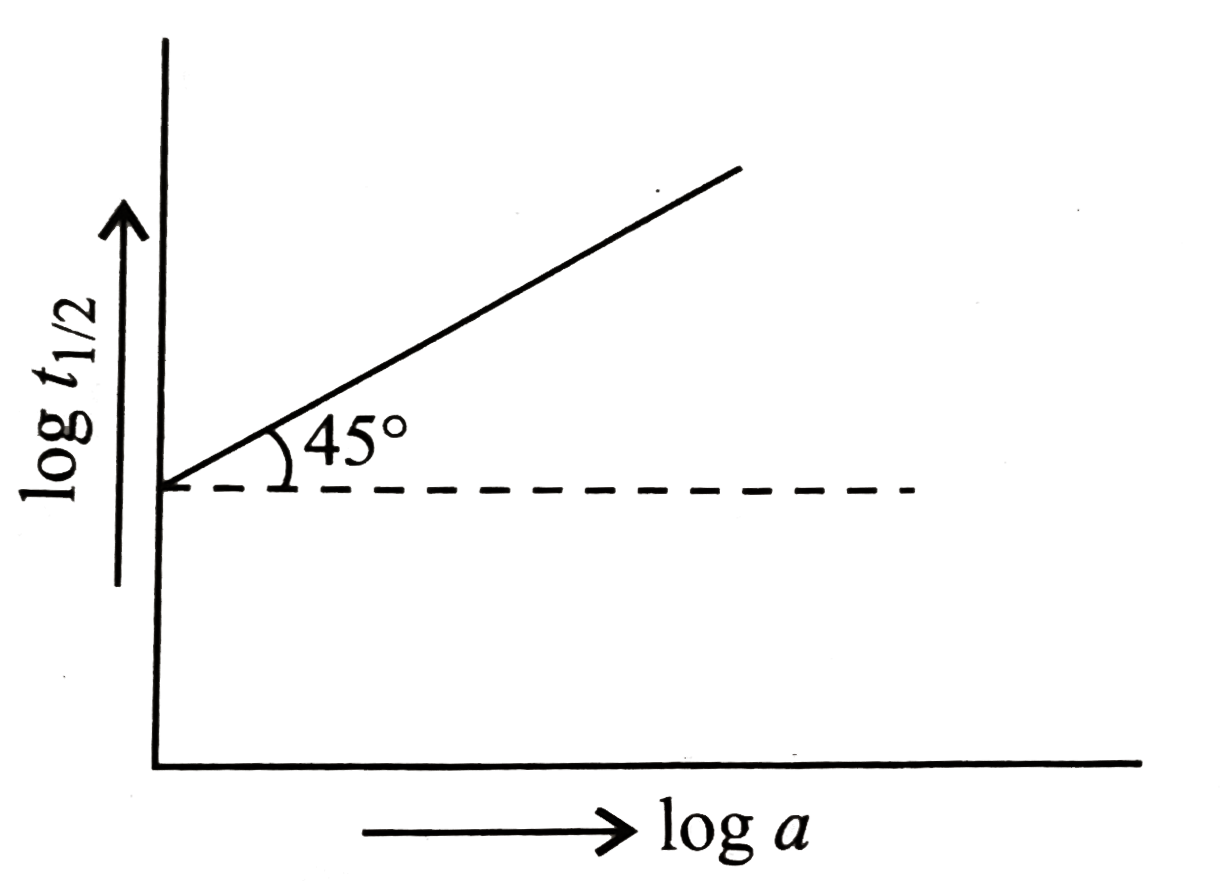Complete Solutions to BITSAT Archives of chapter CHEMICAL KINETICS of Class 12 book with complete answers and questions
| Class 12 | CHEMISTRY |
| Chapter | CHEMICAL KINETICS |
| BITSAT GUIDE | BITSAT Archives |
| Number Of Questions | 16 |
| Academic Year | 2023-24 |
Following is the graph between log `T_(50)` and log a (a = initial concentration) for a given reaction at `27^(@)C`.

Hence, order is01:50View SolutionChoose the law that corresponds to data shown for the reaction, `A + B rarr` products.
 View Solution
View SolutionA reaction takes place in three steps. The rate constant are `k_(1), k_(2)` and `k_(3)`. The overall rate constant `k=(k_(1)k_(3))/(k_(2))`. If `E_(1), E_(2)` and `E_(3)` (energy of activation) are 60, 30 and 10 kJ, respectively, the overall energy. Of activation is
01:28View SolutionConsider the following reaction
`2N_(2)O_(5)iff 4NO_(2)+O_(2)`.
If rate and rate constant for above reaction are `2.40 xx 10^(-5)` mol `L^(-1) s^(-1)` and `3 xx 10^(-5) s^(-1)` respectively, then calculate the concentration of `N_(2)O_(5)`.01:10View SolutionFor a given reaction, `t_(1//2) = 1 //ka`. The order of this reaction is
00:53View SolutionThe time taken for 90% of a first order reaction to be completed is approximately
01:25View SolutionWhat is the energy of activation of a reaction is its rate doubles when the temperature is raised from 290 K to 300 K ?
01:40View SolutionThe active mass of solid is generally taken as
00:39View SolutionFollowing is the graph between `log T_(50)` and `log a` (`a =` initial concentration) for a given reaction at `27^(@)C`. Hence order is
 02:41View Solution
02:41View SolutionSelect the law that corresponds to data shown for the following reaction `A+B rarr` Products
`{:(Exp,[A],[B],"Initial rate",),(1,0.012,0.035,0.1,),(2,0.024,0.070,0.8,),(3,0.024,0.035,0.1,),(4,0.012,0.070,0.8,):}`04:02View SolutionA reaction takes place in three steps. The rate constant are `k_(1), k_(2)` and `k_(3)`. The overall rate constant `k=(k_(1)k_(3))/(k_(2))`. If `E_(1), E_(2)` and `E_(3)` (energy of activation) are 60, 30 and 10 kJ, respectively, the overall energy. Of activation is
01:28View SolutionConsider the following reaction
`2N_(2)O_(5)iff 4NO_(2)+O_(2)`.
If rate and rate constant for above reaction are `2.40 xx 10^(-5)` mol `L^(-1) s^(-1)` and `3 xx 10^(-5) s^(-1)` respectively, then calculate the concentration of `N_(2)O_(5)`.01:10View SolutionFor a given reaction, `t_(1//2) = 1 //ka`. The order of this reaction is
00:53View SolutionThe time taken for 90% of a first order reaction to be completed is approximately
01:25View SolutionWhat is the energy of activation of a reaction is its rate doubles when the temperature is raised from 290 K to 300 K ?
01:40View SolutionThe active mass of solid is generally taken as
00:39View Solution
BITSAT Archives questions and complete solutions for chapter CHEMICAL KINETICS of BITSAT GUIDE of Class 12
